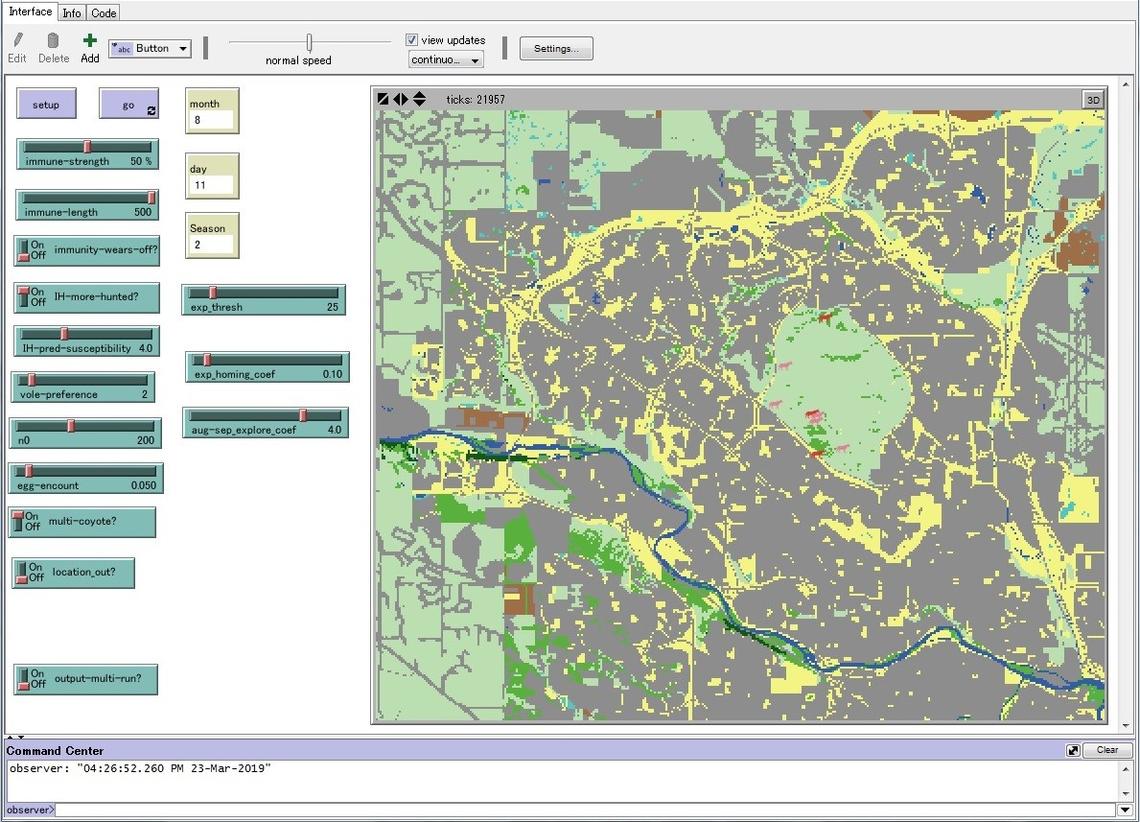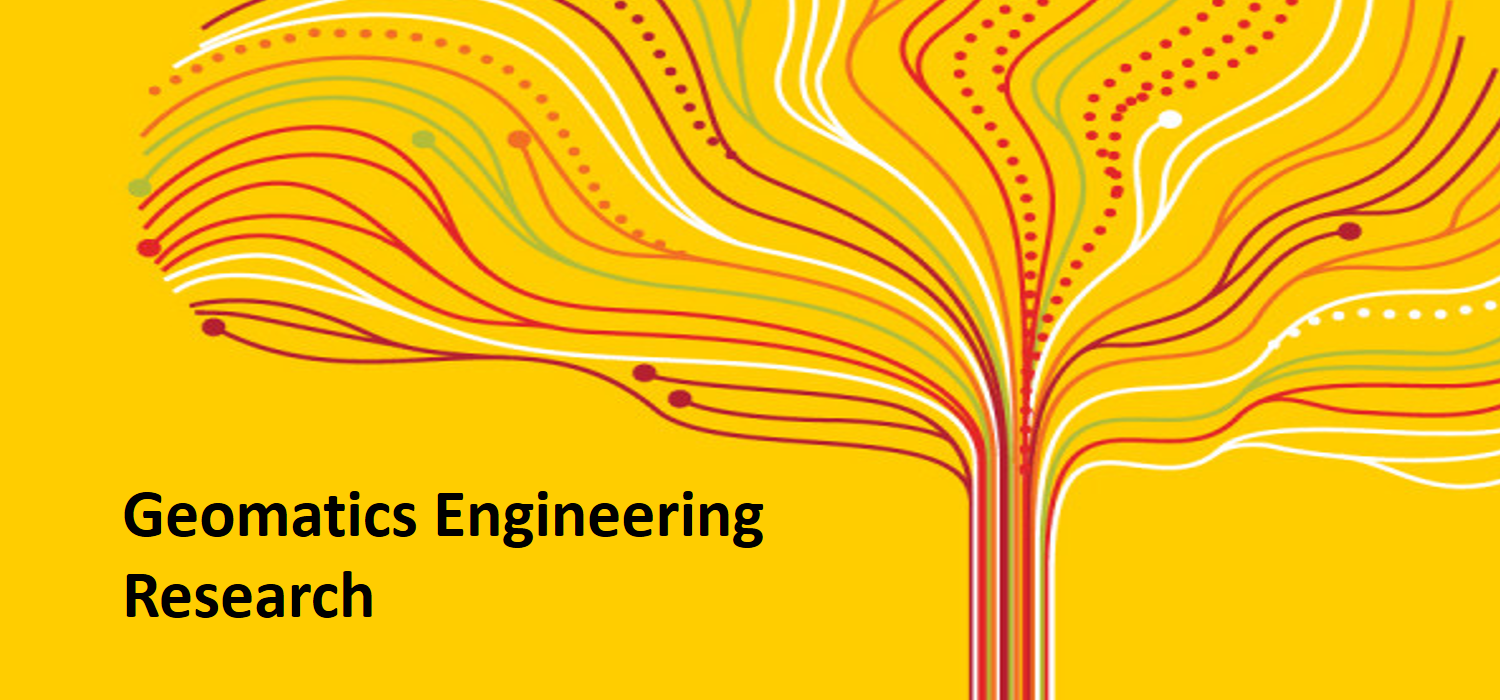
Aug. 25, 2020
Understanding the Heterogeneity of the Echinococcus multilocularis transmission patterns, processes, and mechanisms: an agent-based modeling approach

Echinococcus multilocularis (Em) is a parasite with complex life-cycle that is naturally present among wildlife and a cause for a serious zoonosis. One of the notable patterns of Em epidemiology was the spatial heterogeneity in prevalence. Epidemiological models are essential in managing disease risks. However, because the parasite’s transmission is indirect (through predation of intermediate hosts by definitive host), hosts display territoriality and distinct home ranges, the landscape is heterogeneous, and hosts display high diversity in the parasite load, the traditional epidemiological models are less applicable with complex life-cycle parasites. Therefore, we decided to develop a spatially-explicit agent-based model (ABM).
In this study, small mammal data from the urban parks in the City of Calgary was statistically analyzed for their statistical association to the environmental variables, and to the observed prevalence of Em among wildlife hosts. The association of small mammal community to the environmental variables were used to develop a map of small mammal communities. Fecal data of dogs and coyotes were analyzed for spatial patterns, association to the environmental variables, and to the park management. Results from these analyses were used to develop the virtual urban landscape of the ABM, allowing the development of Calgary Echinococcus multilocularis Coyote Agent-based model (CEmCA). The CEmCA is a novel work of ABM of trophically-transmitted parasites with complex life-cycle using a complex landscape, and has many more potential use for assessing Em and epidemiology in general.

Funding sources and collaborators: Thanks to Chris Manderson and Jenna Cross from the City of Calgary Parks for financial and technical support through direct funding and through the Urban Alliance initiative with the University of Calgary. We thank Department of Geomatics Engineering, Faculty of Graduate Studies, University of Calgary and Alberta Innovates Health Solutions for studentships. We thank Karina Lamy, S. Gingerick, Sabrina Colquhoun, Joanna Deunk, Heather Gordon, Megan Hart, Fabien Labelle, Sultana Majid, Abraham Munene, Holly Shaw, Francois Patard, Kaitlyn Varga and Monica Viapiana for their precious contribution in field collection and laboratory analysis. We are grateful to June Au Yeung, Courtney Cavinet, and Monica Freeman, for their generous and friendly support, as well as Susan McKee and Quazi Hassan for their constant availability. Special acknowledgments to James Wang and Claudia Klein.
